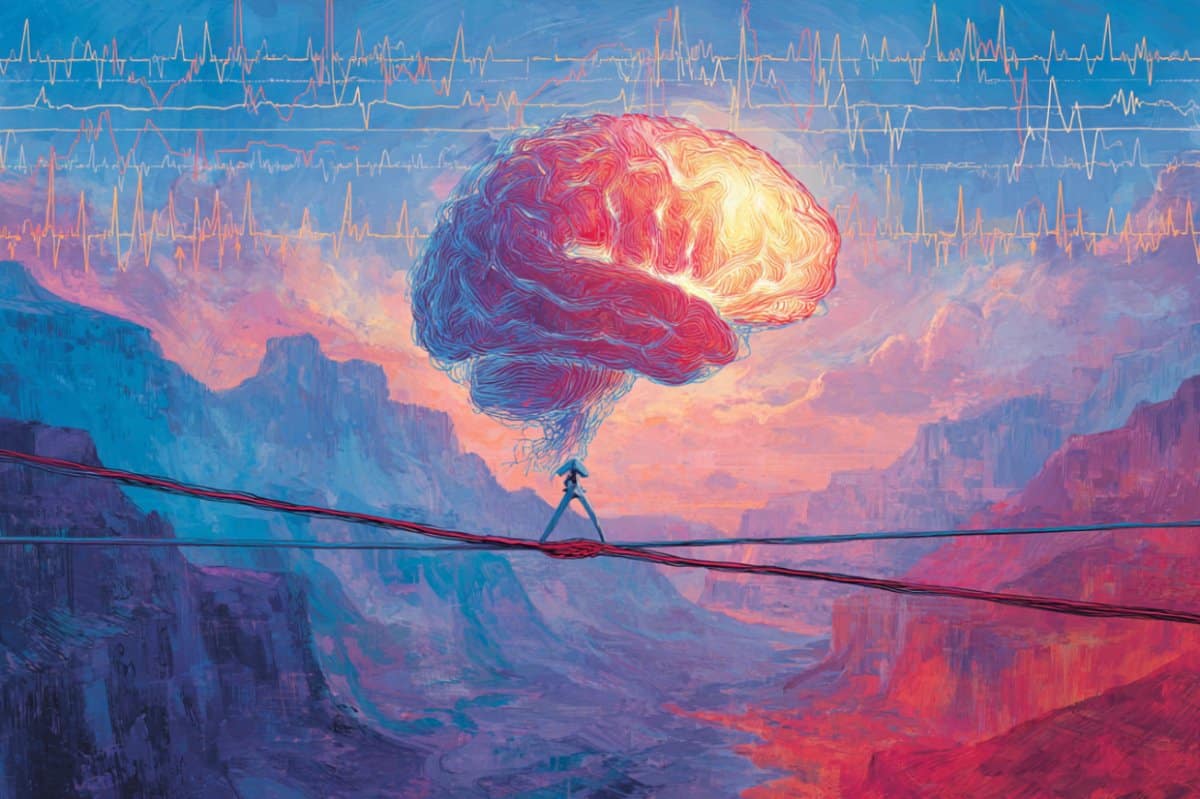
The Brain’s Sweet Spot: Criticality, Cognition, and the Promise of Alzheimer’s Prevention
New research from Washington University in St. Louis proposes a groundbreaking unified theory of brain function centered on “criticality”—a dynamic balance between order and chaos that optimizes learning, memory, and information processing. This “Goldilocks zone” of brain activity, researchers suggest, is essential for healthy cognition and may hold the key to preventing neurodegenerative diseases like Alzheimer’s.
Criticality: The Brain’s Optimal Computational State
Associate Professor of Biology Keith Hengen and physicist Woodrow Shew propose that criticality, a concept borrowed from physics, is the universal computational setpoint for healthy brains. This state, existing at the edge of chaos, allows the brain to efficiently process information across multiple scales, from individual neurons to large-scale networks.
Imagine a sandpile: As sand is added, the pile grows steeper until it avalanches. The moment just before the avalanche is a state of criticality—a dynamic balance poised between order and chaos. Similarly, the brain operates optimally at this “tipping point,” maximizing its computational power and adaptability.
This “sweet spot” allows for:
- Optimal Information Processing: Efficient encoding and transmission of complex patterns.
- Enhanced Learning and Memory: The ability to acquire and retain new information effectively.
- Adaptive Plasticity: The brain’s capacity to reorganize its connections, essential for learning and adapting to new experiences.
Criticality and Alzheimer’s Disease: A New Perspective
Hengen and Shew’s work offers a paradigm shift in understanding neurodegenerative diseases. Instead of solely focusing on damaged brain regions or specific proteins like tau, their theory posits that Alzheimer’s disrupts the brain’s ability to maintain criticality.
The gradual erosion of criticality explains why Alzheimer’s patients can appear normal until significant neuronal loss has occurred. The brain compensates for the loss of criticality, masking functional problems until the compensatory mechanisms fail. This explains why traditional assessments may miss early stages of the disease.
The research suggests that:
- Alzheimer’s disrupts criticality: Tau protein buildup directly interferes with the brain’s optimal computational state.
- Sleep restores criticality: Sleep acts as a “reset button,” restoring the brain to its critical state.
- Early diagnosis is possible: fMRI may detect disruptions in criticality years before symptoms appear, enabling early intervention.
Measuring Criticality and Potential Therapeutic Interventions
Hengen and Shew have developed a mathematical framework to measure how close a brain is to criticality using fMRI brain imaging. This allows researchers to quantitatively assess brain function and identify individuals at risk for neurodegeneration.
The link between criticality and Alzheimer’s opens exciting avenues for therapeutic intervention:
- Early diagnosis: fMRI could detect criticality disruptions years before symptoms emerge.
- Personalized interventions: Tailored strategies to maintain or restore brain criticality.
- Sleep-based therapies: Targeted sleep interventions could reinforce criticality and improve cognitive function.
Research on mice with Alzheimer’s-like symptoms shows that sleep interventions can enhance learning ability by restoring criticality. This suggests that sleep-based therapies could play a significant role in preventing or slowing neurodegeneration in humans.
The Broader Implications of Criticality
Hengen’s work extends beyond Alzheimer’s, offering a new framework for understanding human neurobiology. It suggests that individual differences in criticality may explain variations in cognitive abilities and even artistic talent.
This unified theory of brain function has the potential to revolutionize our understanding of the brain, leading to earlier diagnoses, personalized interventions, and new therapies for neurological disorders. The integration of physics, biology, and neuroscience is crucial for fully unlocking the mysteries of the brain and its remarkable computational capabilities.
Key Takeaways:
- A new unified theory of brain function proposes that “criticality,” a dynamic balance between order and chaos, is the optimal computational state for the brain.
- Criticality is essential for learning, memory, and adaptive plasticity.
- Alzheimer’s disease may disrupt brain criticality, leading to cognitive decline.
- fMRI can potentially measure brain criticality, enabling earlier diagnosis and personalized interventions.
- Sleep plays a crucial role in restoring brain criticality.
- This theory offers a new perspective on brain function and has the potential to revolutionize our understanding of neurological disorders.





